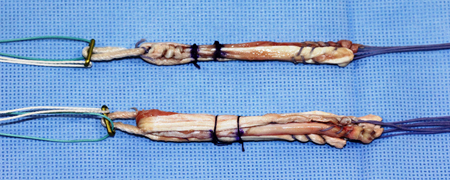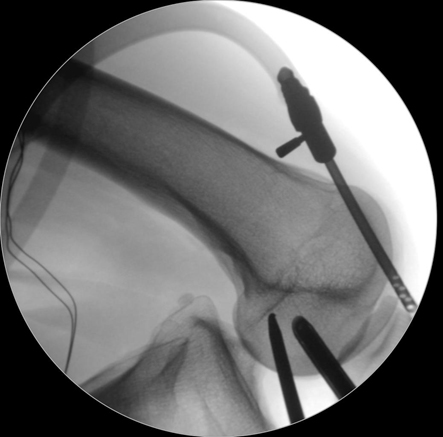Anterior Cruciate Ligament Reconstruction
The anterior cruciate ligament (ACL) is one of the most commonly injured ligaments of the knee. Many active people who injure this ligament, and will require an ACL reconstruction, and this is one of the most commonly performed procedures in our practice here in Dubai. In general, the incidence of ACL injury is higher in people who participate in high-risk sports, such as basketball, rugby, net ball, skiing, kite-boarding, and soccer.
We determine if an ACL injury is present by taking a good history, and physical examination. Many people report that their knee feels loose or unstable, or may continue to give out or buckle. Two of the tests that we commonly perform to demonstrate laxity are the Lachman Test, and the Pivot Shift Test. Both of these tests are demonstrated in the following videos.
If the initial examination suggests an ACL injury, further tests are completed, most commonly a MRI of the knee. A sample image is seen below.

If it is determined that for all those involved that the ACL should be repaired, the patient is scheduled for surgery and taken to a hospital or surgery to undergo the operation to reconstruct the ACL.
We commonly use one of two different grafts, or tissue to replace the torn ligament. We use part of the patellar tendon, or a hamstring tendon to replace torn ligament. Images of a patellar graft, and hamstring graft is shown below. In many cases the choice of graft is made prior to the surgery.

patellar graft

hamstring graft for double bundle ACL reconstruction.
The operating room is set up so that the knee is able to fully bend and straighten.

After the tissue to repair the ligament has been obtained, we perform arthroscopic or key-hole surgery to create the new ligaments.
Image of the torn ligament seen at surgery.

We mark the location of the injured ACL

We then make new tunnels so that the new ligament can be placed.

We also make a tunnel in the shin bone as well, and place a stitch between the two, so that the new ligament can be moved into the correct place.

We also check with an xray during the operation, to make sure that the tunnels are in the correct location, and that the new ligament will not get in the way of straightening and bending the knee.


We then pull the graft into place and secure the new ligament tightly.

We then make sure that the ligament does not get in the way when straightening the knee.




